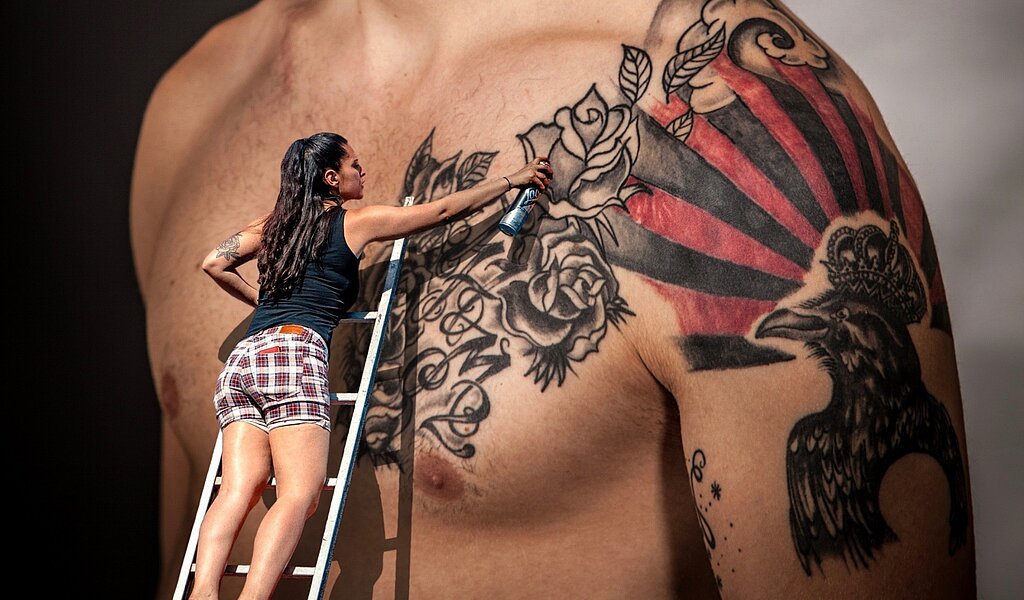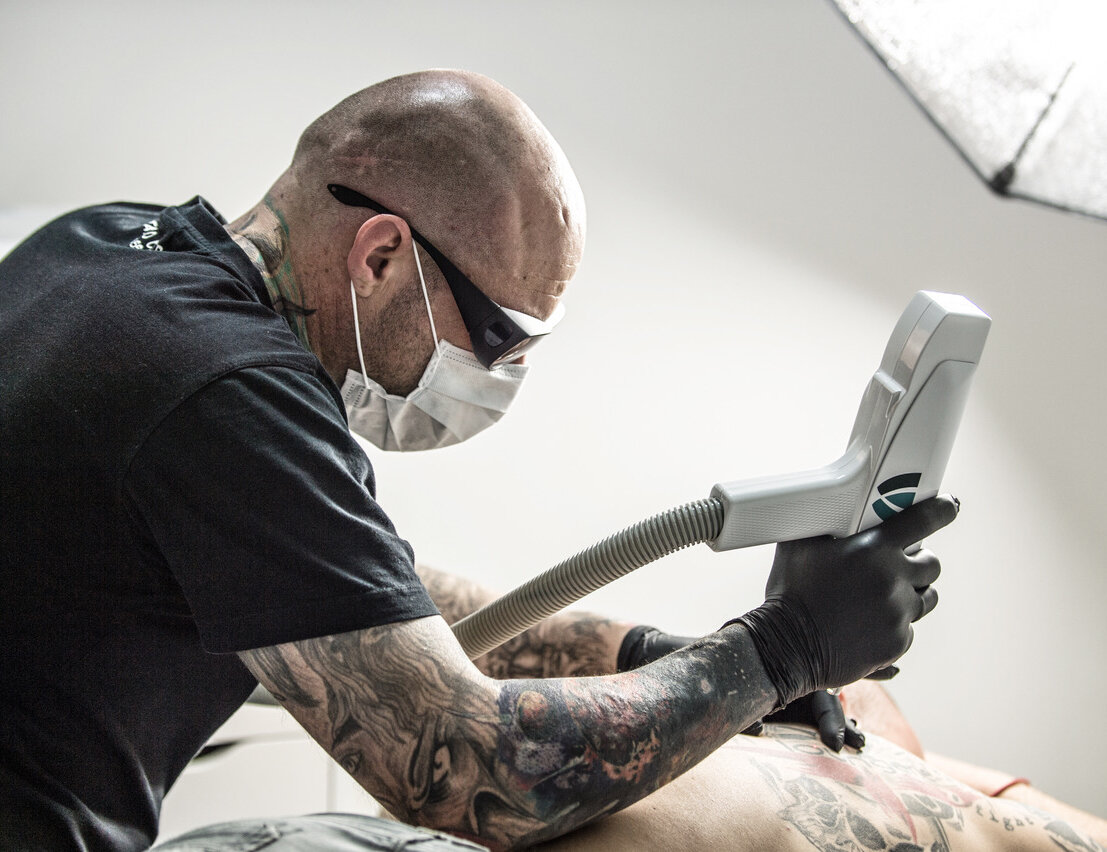

Your individual possibilities to get rid of an unloved tattoo
You don't like to look at it, you hide it under a long sweater and it's a thorn in your side. And suddenly you realize: it has to go. The reasons for a cover-up are numerous. You might want to get rid of your ex-partner's name, an ill-considered youthful sin or a souvenir from a wild party night as quickly as possible. Other reasons can be that you have put yourself under the needle at the wrong tattoo artist and are now adorned with runny outlines, faded colors and an unattractive engraved motif on a body part where it looks completely out of place.
Be aware that the possibilities of a cover-up tattoo are limited. The size, the stitch depth, and especially the color of your old tattoo strongly influence the desired cover-up. That's why you should take enough time for the preparation. Turn to the right tattoo artist this time and do sufficient research. The tattoo artist should also personally inspect your unloved tattoo during a consultation to go through the options you have. Only then can be talked about motif, colors and size of the cover-up. Once you have decided, the process of tattooing is identical to normal tattoos. However, it must be stung deeper and several layers of paint may be necessary. This is because a cover-up doesn't work like a canvas that can be painted over as many times as you like, even with lighter shades. So plan on multiple sessions for larger rescues. Also take into account here that a tattoo always reflects the current state of the possibilities of tattooing.
With a cover-up tattoo, new color pigments are stung into the same skin layer as your old tattoo. Freshly stung, the pigment density in this skin layer is now higher and lies above the old color pigments. With time, however, these inevitably sink further into the skin and the colors fade. Due to this time process it can happen that you can see your old tattoo shining through again. This is especially the case with bright colors, so be sure to consider the time factor and the changing appearance of the colors of your tattoo. It is therefore advisable to cover with darker colors.
The Touch-up
If you like your old tattoo in principle, but it was either not well engraved or the colors are already faded, you can simply re-stitch it. You can also get a new tattoo from the same tattoo artist, provided you were satisfied with the result.
Mending
If you like your motif only moderately and it is already getting on in years, you can have your tattoo touched up. The basic motif is retained (or what it should once be), re-stitched and new details can be added so that your tattoo becomes a real eye-catcher again. This is a great way to make your tattoo shine again.
Integrate
If you can't quite part with your old tattoo yet, for example because it reminds you of a moment you want to preserve, then you can also integrate your old motif into a new one. However, this requires a good dose of humor, because your old motif will still be visible, just no longer represents the center of your new tattoo.
The Blast-over
The blast-over is also stung over the old tattoo, but without covering this completely. Because this effect is desired! So the new tattoo lies more or less harmoniously over the old tattoo.
Cover Up
The classic variant of the cover-up is the covering of the old tattoo with a completely new motif. Here you are freer in the choice of motif, because the old tattoo is no longer visible later. Tattoo artists like to play with little tricks here. They take the old motif out of focus and place it on the outer areas of the new tattoo to put the main focus on another place. Thus, an entire motif can discreetly disappear visually under the new.
Heavy Blackwork
When nothing else works: Black it out! Clearly the easiest way to cover up your unloved artwork is the heavy blackwork method. Here, you stitch in pure black over a wide area and more and more people dare to use this provocative style. If you don't want it to be quite so extreme, you can also combine the black areas with other styles. Suitable here are especially blackwork, tribal and dotwork.
As a last resort, a tattoo removal with the laser is considered. So if you want to get rid of your motif completely, this is the right way for you. However, be aware that even with lasers, not all of your tattoo's remnants can be completely removed. Also, it often takes several sessions to get a tattoo removed. So it takes a long time, possibly months, until you can expect results on your skin. Because this must first break down the pigments independently.
If you want to get a new tattoo in the same place after the treatment, you should wait at least six months so that your skin can heal and regenerate. If your unloved tattoo is too dark to cover, you can first lighten it with a laser and then cover it up with a cover-up after it has healed.
Conclusion
To sum up: To reignite the joy of your unloved tattoo, cover-ups are the optimal solution. Your options are limited, but still diverse. Blackwork, traditional or tribal, for example, are suitable for a rescue. However, be aware that the new tattoo will definitely be darker and larger than the covered one. Also, plan enough time for the process, as a cover-up is often a challenge for your tattoo artist as well. In the end, however, you have to like it and enrich your quality of life again!







Kommentar schreiben
Kommentare
Keine Kommentare